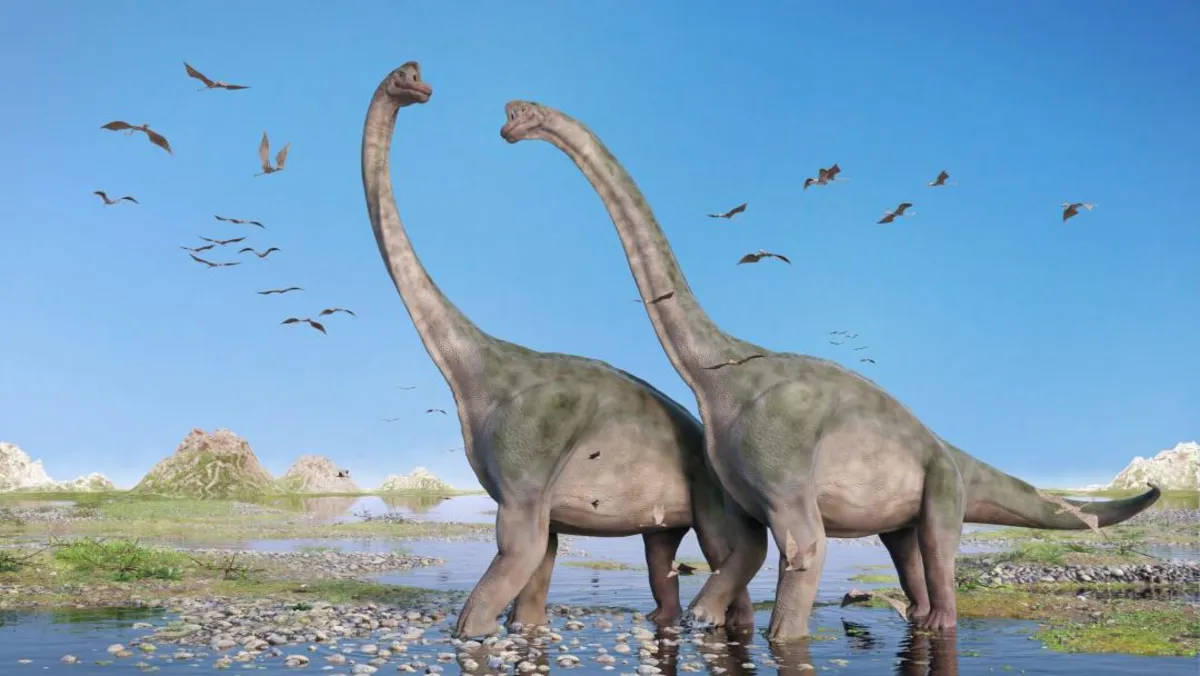
For decades, scientists have theorized that the gigantic, long-necked sauropods, famously depicted in movies such as Jurassic Park and The Land Before Time, were predominantly herbivorous creatures. While researchers had previously suggested this based on the anatomical features of these dinosaurs, including their tooth shape and massive bodies which seemed ill-suited for chasing prey, concrete evidence was elusive. A recent study published in Current Biology now presents what is believed to be the first definitive proof of their herbivorous nature: actual fossilized plant matter discovered within the gut of a sauropod.
The groundbreaking discovery revolves around a 36-foot-long juvenile Diamantinasaurus matildae affectionately named Judy, which was excavated in 2017 from the Winton Formation in Queensland, Australia. The New York Times reports that this exciting find was led by paleontologist Stephen Poropat and his dedicated team at the Australian Age of Dinosaurs Museum. They uncovered a layer of fossilized plant material, scientifically known as coprolites, located near Judy's pelvis. The rarity of coprolites, particularly in plant-eating dinosaurs, underscores the significance of this discovery.
Further examination of the fossilized plant matter revealed compelling evidence that the plants did not merely drift into the dinosaur’s body post-mortem. Instead, the coprolites were found alongside a layer of fossilized skin, bolstering the argument that they were indeed present in the gut at the time of fossilization. Analysis of Judy's coprolites suggested a diverse diet, with remnants of conifer trees and flowering plants identified within the samples. The remarkable preservation of these leaves led Poropat's research team to conclude that sauropods swallowed their food whole, relying on gut bacteria to digest the material over a span of one to two weeks.
Experts in the field have noted that these findings reinforce long-held beliefs about the dietary habits of sauropods, indicating that these dinosaurs consumed a wide variety of plant life and were not particularly selective about their food sources. This adaptability was likely crucial for sustaining their enormous bodies. However, it is important to recognize that Judy represents only a single individual, and Poropat acknowledges that this particular dinosaur's last meal may not fully encapsulate the dietary habits of all sauropods.
Nonetheless, researchers assert that this single, well-preserved coprolite provides an extraordinary glimpse into what these prehistoric giants actually ingested and how they processed their food, offering invaluable insights into the ecological dynamics of the time.
(This content was created with the help of AI. Read our AI policy.)